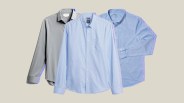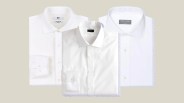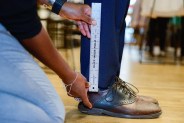A lot of people have no idea that they’re walking around with dry, damaged hair. Or they do, they just haven’t considered a remedy besides shaving it all off. That’s not a longterm solution. If hair is brittle, frayed or parched, the follicle is likely on life support, too. That means it’s malnourished and unable to grow firm and shiny hair.
Hair can become damaged for many reasons, though it’s usually some combination of a couple. These include things like smoking, sleeplessness, consuming alcohol and sugary foods, dehydration, poor hygiene, dandruff, environmental elements (such as air pollution) and a lack of protein or vitamins. Even dyeing hair or using a blow dryer can significantly hinder its health.
The good news is that damaged hair is not irreversible. Follow these six tips set you up for healthier, firmer, shinier, fuller hair.
1. Hydrate thy hair
This one’s easy: get a hydrating shampoo. Look for bottles that express their hydrating powers. They’re the ones that swap out sulfates and other drying agents, and are also plugged full of nutrients (almost like a conditioner).
In general, cheap means dry. The cheaper the product, the worse its ingredients.
Use this shampoo every second or third day. Yep — that’s the limit. Exceptions can be made if you find that the extra-washed hair stays more voluminous. But therein lies the problem. There’s more volume when hair is parched. And there are other ways to achieve that effect while keeping it healthy.







